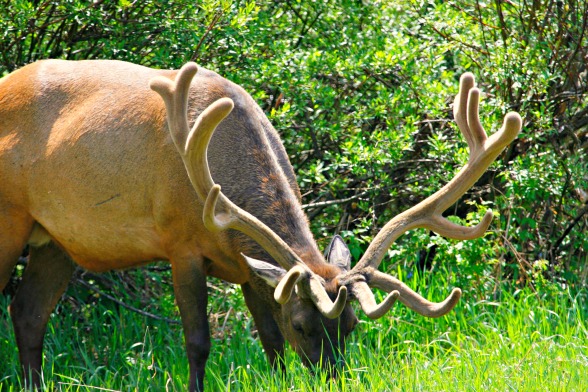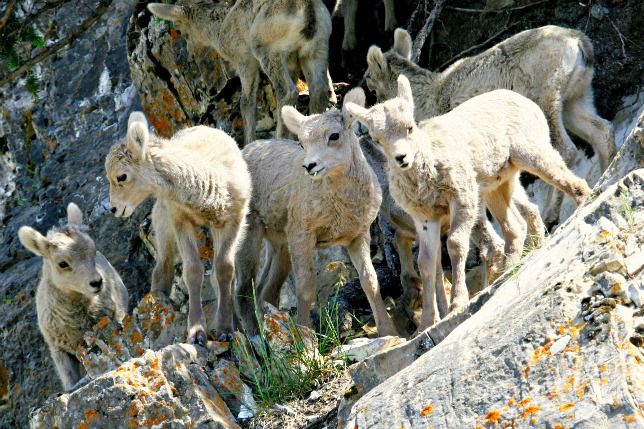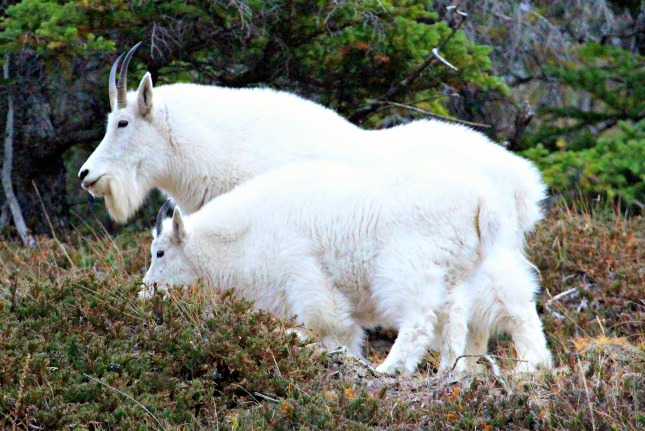Every year, deer, elk and moose collisions are the cause of hundreds of thousands of vehicle accidents along North American roads. Colliding with these animals, particularly moose (a mature bull moose may weigh up to 1,200 pounds), is potentially fatal for driver and passengers and is likely to cause significant damage to your vehicle—and to the animals.

The elk or wapiti is one of the largest land mammals in North America © Rex Vogel, all rights reserved
To avoid a collision, be alert and know what to do if you come head-to-head with one.
Animals are active 24 hours of the day, and all year round, but there are peak times when wildlife vehicle collisions may be more likely and drivers should be especially alert.
Dusk and dawn are traditionally times of high wildlife vehicle collisions. Light levels are low, and animals are active at these times. Moose are especially difficult to see at night because their fur is very dark, and they are so tall that their eyes are normally above most headlight beams.
Avoiding a Collision
Wild animals are a threat to motorists, but there are measures you can take to avoid hitting them.
Collisions occur most often in prime deer, elk, and moose habitat such as forested areas and waterways. Heed the warning signs and increase your roadside awareness. If you see a deer, elk, or moose crossing sign, be extra alert and slow down.
Speed is a major factor in collisions. Wildlife experts have recommended 55mph as a suitable speed for wildlife zones as it provides you with some reaction time to stop.
Actively scan the sides of the roads as you drive for any signs of wildlife. Look on the road sides, the shoulders, down into ditches (they love the grass there), on the road itself and try to spot any signs of movement.
One deer means more deer. Deer travel in herds and if you see one, slow right down as there will be many more. Moose are less gregarious, so one moose may simply mean one moose but it is still suggestive that more moose are in the area. And cows are frequently with a calf.
What if a Wildlife Collision is Inevitable?
In certain situations, there is no real choice except to hit the wild animal.
If it appears impossible to avoid the animal, aim for the spot the animal came from, not where it is going. This may take you away from it and the animal is more likely to keep moving forward rather than backtracking. This will only work if there is one animal.
Shift your line of eyesight to where you want to go, not at the animal. You tend to drive where you look―if you are looking at the animal, that is where the vehicle tends to go.
Try to skim rather than fully impact the animal. If you must hit something, try for a glancing blow rather than a head-on hit.
Brake firmly and quickly, then look, and steer your vehicle to strike the animal at an angle.
Take your foot off the brake as you impact. The release of the brake causes a slight lift of the front end of the vehicle and reduces the chances of the animal coming through your windshield if your vehicle is tall enough.



